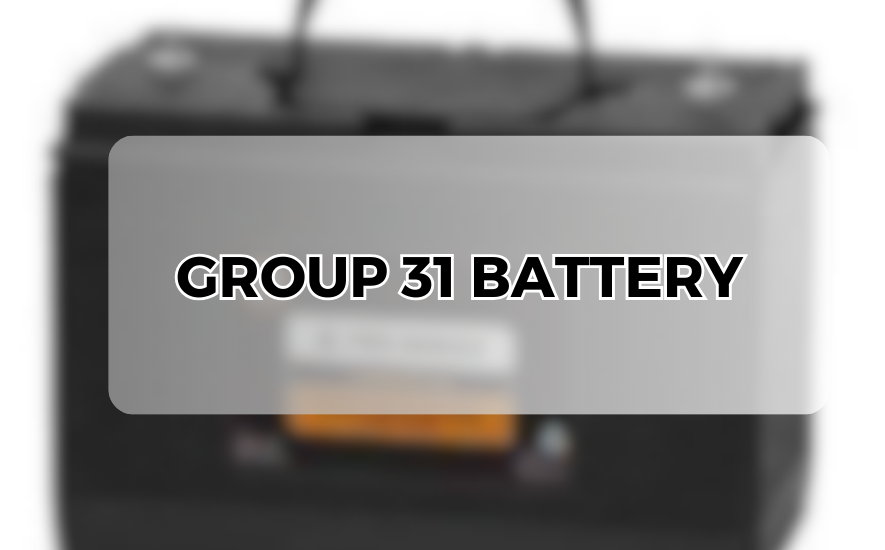Introduction:
In the world of energy storage, the Group 31 battery stands tall as a cornerstone of modern technology. Its robust design, exceptional performance, and versatility have earned it a place of prominence in various industries, from automotive to marine applications. In this article, we delve into the intricacies of Group 31 batteries, exploring their features, applications, and the crucial role they play in powering our lives.
What is a Group 31 Battery?
Group 31 batteries belong to the family of lead-acid batteries, renowned for their reliability and efficiency. They are characterized by their standardized size and terminal layout, making them compatible with a wide range of vehicles and equipment. Typically, Group 31 batteries feature a durable polypropylene case, lead-calcium grid construction, and advanced technology for enhanced performance and longevity.
Key Features and Specifications:
1. Size and Dimensions: Group 31 batteries typically measure around 13 inches in length, 6.75 inches in width, and 9.5 inches in height, although slight variations may exist among manufacturers.
2. Voltage and Capacity: These batteries are primarily designed to deliver 12 volts of power, with capacities ranging from 90 to 125 ampere-hours (Ah). This ample capacity ensures sustained performance, even in demanding applications.
3. Construction: Group 31 batteries often employ Absorbent Glass Mat (AGM) or flooded lead-acid technology. AGM batteries feature a unique design where the electrolyte is absorbed into fiberglass mats, offering spill-proof and maintenance-free operation. Flooded lead-acid batteries, on the other hand, utilize a liquid electrolyte, requiring periodic topping up with distilled water.
4. Terminal Configuration: Most Group 31 batteries utilize a dual-terminal design, with both top and side terminals, providing flexibility in installation and connectivity.
Applications of Group 31 Batteries:
1. Automotive Sector: Group 31 batteries find extensive use in heavy-duty trucks, buses, and recreational vehicles (RVs), where reliable starting power and deep-cycle capabilities are essential.
2. Marine Industry: Due to their robust construction and resistance to vibration, Group 31 batteries are favored for marine applications, powering boats, yachts, and other watercraft.
3. Industrial Equipment: These batteries are employed in various industrial settings, including material handling equipment, aerial lifts, and standby power systems, ensuring uninterrupted operation and productivity.
4. Renewable Energy Storage: Group 31 batteries play a vital role in off-grid and renewable energy systems, storing power generated from solar panels, wind turbines, and other sources for later use.
Advantages of Group 31 Batteries:
1. Durability: With rugged construction and advanced technology, Group 31 batteries offer exceptional durability, withstanding harsh operating conditions and prolonged use.
2. Versatility: Their standardized size and terminal layout make Group 31 batteries compatible with a wide range of equipment, simplifying installation and replacement.
3. High Performance: These batteries deliver consistent and reliable performance, whether in starting or deep-cycle applications, ensuring dependable power supply when needed.
4. Cost-Effectiveness: Despite their advanced features, Group 31 batteries remain relatively affordable, offering excellent value for money in terms of performance and longevity.
Conclusion:
In conclusion, Group 31 batteries stand as a testament to the ingenuity and innovation in energy storage technology. From automotive to marine, industrial to renewable energy applications, these batteries continue to power our world with efficiency, reliability, and versatility. As we move towards a future driven by sustainable energy solutions, Group 31 batteries are poised to remain at the forefront, providing the backbone for modern energy storage needs.




